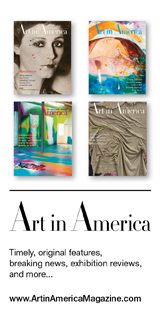Isamu Noguchi’s unique Goodyear table of 1939
the most important American design works from the twentieth century
On 16 December 2014 Isamu Noguchi’s unique Goodyear table of 1939, carrying an estimate of $2,000,000 – 3,000,000 will be auctioned at Phillips New York. This imposing sculptural icon – designed for then-president of the Museum of Modern Art – is widely considered one of the most important American design works from the twentieth century.
Isamu Noguchi once said of the table: “Even the first table I made for Conger Goodyear was not exactly utilitarian. I thought of it as a sculpture that was a table. After all, you can say that the earth is a table. We feast upon it. You can also say that it is utilitarian, this earth. Or you can say that it is something else.”

After nearly two decades spent producing figurative works in bronze and terracotta, and more specifically a long series of commercially successful portrait sculptures for clients and friends including Buckminster Fuller, Clare Booth Luce, George Gershwin, and Berenice Abbott, among others, Isamu Noguchi hinted at a return to abstraction in the 1930s, at first with costume and set designs for choreographers Ruth Page and Martha Graham, as well as larger, semi-abstract works including the Ford Fountain for the New York World’s Fair.
During an interlude in Paris on a Guggenheim Fellowship, during which he was Constantin Brancusi’s studio assistant for six months in 1927, Noguchi had produced an early series of formal, almost rigid abstractions under the influence of his mentor. Then in 1939, at the request of A. Conger Goodyear, President of the Museum of Modern Art, Noguchi boldly returned to abstraction with the design of the present unique lot, Noguchi’s first table, for the living room of Goodyear’s weekend house in Old Westbury, New York.
More than furniture design, the table heralded Noguchi’s fertile developments of the 1940s including his “interlocking” sculptures, the direct descendants of the present lot. Comprising stack-laminated rosewood and Herculite plate glass, the table mimicked in part the texture and materials of the house for which it was commissioned, the Goodyear House by Edward Durrell Stone, characterized by its stacked bricks and Herculite plate glass windows. Paul Goldberger, former architecture critic at the New Yorker, has called the Goodyear House “one of the most important houses built in the United States between the two world wars”. In that sense it keeps equal stature with the table by the same name.
























